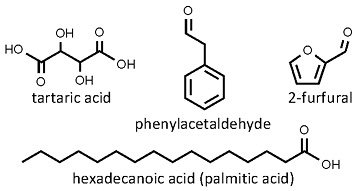 Tamarindus indica
Tamarindus indica
tamarind
Back to “Spices: tamarind (Tamarindus indica)fr”
Tamarindus indica L. (Fabaceae); tamarinde, suurdadel (Afrikaans); tamar hindi (Arabic); suan dou (Chinese); tamarin (French); Tamarinde, Sauerdattel (German); ambli (Hindi); tamarindo (Italian, Japanese); asam (Malay); tamarindeiro (Portuguese); tamaríndo (Spanish); ma khaam (Thai); me (Vietnam)
DESCRIPTION Tamarind spice is the fleshy, semi-dried, reddish-brown inner wall of the fruits. It is edible and has a delicious sweet and sour taste, with an acidic, fruity fragrance.
THE PLANT A large tree with compound leaves, white and yellow flowers and oblong, pale brown pods.
ORIGIN Indigenous to North Africa, and still grows in parts of Sudan. The tree reached India such a long time ago that it was assumed to be indigenous there. From India it reached the Middle East, hence the Arabic name tamarind, from tamar (date) and hindi (from India). It also spread eastwards to Malaysia and Indonesia, where it was incorporated in the local cuisines. More recently, the Spanish introduced tamarind to the New World, where it became very popular, especially in Mexico, Puerto Rico and other South American countries. Tamarind is today found in practically all warm regions of the world. The main producers are Thailand, India and Puerto Rico.
CULTIVATION Trees are easily propagated from seeds (that have to be scarified) and thrive in a warm, frost-free climate.
HARVESTING Ripe pods are picked by hand and processed to separate the pulp from the non-fleshy outer skin and to remove the seeds. A large tree can yield about 90 kg of purified pulp.
CULINARY USES The delicious sweet-sour taste of tamarind is used worldwide as an acidifying agent in cooking, often dissolved in water. It is used in sour curries, sweet and sour dishes, lentil soup, chutneys, condiments (e.g. Worcestershire sauce and HP sauce), spice mixtures (e.g. fish curry masala), traditional cold drinks (e.g. Indian tamarind water or impli panni), commercial cold drinks, carbonated drinks, jams, sorbets, and fruit and vegetable purées. Commercial tamarind products available in Mexico and Puerto Rico include bottled juice, fruit pulp, jams and sweets.
FLAVOUR COMPOUNDS The sour taste of the fruit pulp is due to tartaric acid, which is also one of the main acids in wine. The fruit pulp contains 10% tartaric acid and 30−40% sugars, hence the distinctive sweet-sour taste. The main volatile compounds in the fruit pulp are 2-phenylacetaldehyde, 2-furfural and hexadecanoic acid (palmitic acid). The aroma of 2-phenylacetaldehyde, also found in flowers and in chocolate, is described as sweet, honey, rose, green and grassy.

NOTES Along the west coast of India, the sun-dried fruit wall of the indigenous kokum tree (Garcinia indica) is sometimes the preferred substitute for tamarind. The blackish purple product, known as kokam or aamsul, is used in sour curries, fish curries, lentil or dhal soups and other dishes. Tamarind pods are superficially similar to the edible and sweet-tasting carob fruits (Ceratonia siliqua) which are commonly used in eastern Mediterranean and western Asian cuisines. It is best known in Western countries as a chocolate substitute and main ingredient of carob candy bars, especially popular with people who want to avoid caffeine.
1. Morton, J. 1987. Tamarind. pp. 115–121. In: Fruits of warm climates. Julia F. Morton, Miami, Florida.
2. Hutton, W. 1997. Tropical herbs and spices. Periplus Editions, Singapore.
3. De Caluwé, E., Halamová, K., Van Damme, P., 2010. Tamarindus indica L. – A review of traditional uses, phytochemistry and pharmacology. Afrika Focus 23: 53−83.
4. Pino, J.A., Marbot, R., Vazquez, C. 2004. Volatile components of tamarind (Tamarindus indica L.) grown in Cuba. Journal of Essential Oil Research 16: 318−320.